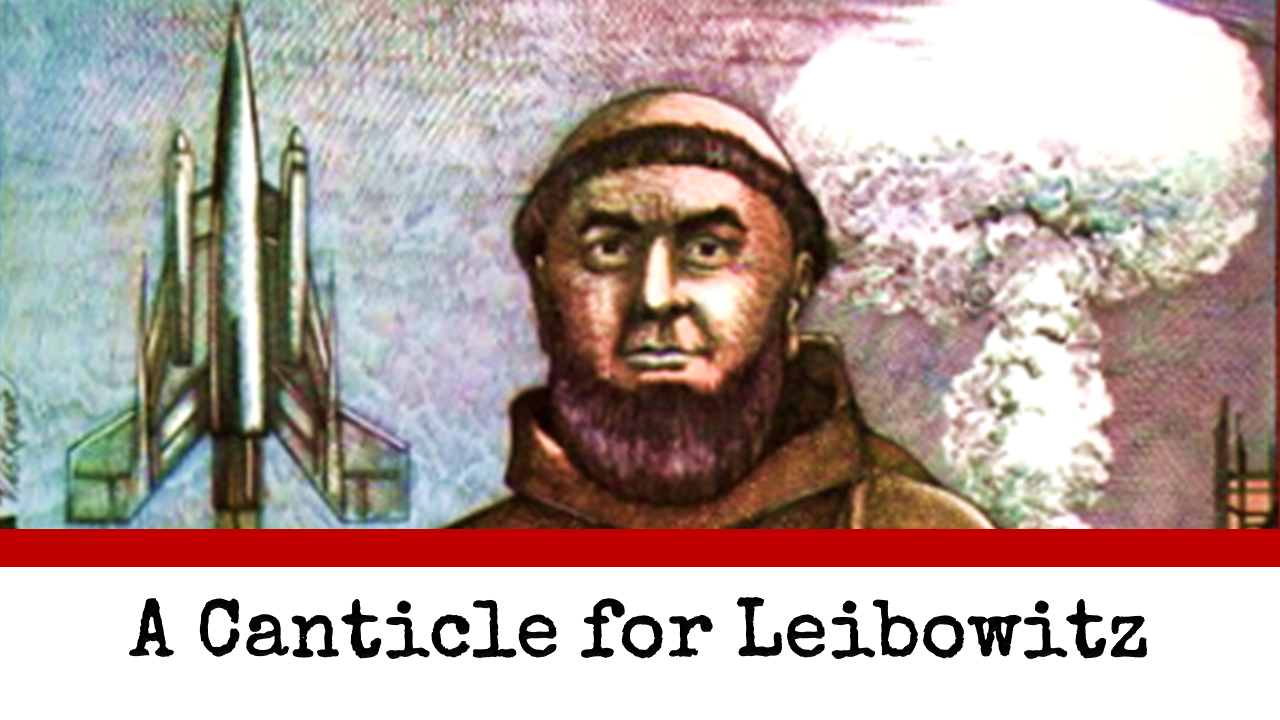I once tried to describe the concept of a Tech-Priest to a dear friend of mine, and while she wasn’t a WH40K fan, she bought me a copy of A Canticle for Leibowitz, which she thought spoke to the theme of a technologically advanced cleric. I’ve just finished the book this afternoon, and I can see why it’s considered a classic.
A Canticle for Leibowitz was written in 1959 by Walter M Miller Jnr, a beautiful and slightly foreboding tale about history, science and faith. I don’t want to give any spoilers away, so I’m just going summarise this in broad terms. The book takes place after a nuclear war, where the archaeologist-monks of the Albertian Order of Leibowitz dutifully recover, translate and copy every piece of information they can find regarding the now-forgotten world of technology. In a nuclear-blasted landscape filled with mutants or angry mobs eager to destroy any trace of learning, the story is a series of scenes from the Order’s monastery home over a thousand-year period.
The book’s strength comes from two masterful writing techniques. The first is immersion, through dialogue and descriptive setting. I’ve written before about how the writing exercise of Two Line Stories can pack as much contextual information as possible into a pair of sentences – this is the same principle stretched out over a millennia-long novel. The reader really gets a feel for the Order monks, with their faiths and doubts, their tiny triumphs and failures, and their struggle against a larger, and often unforgiving, world. The cast of characters is large, but each one gets their chance to express an individual personality, and to leave their mark on the growing story of the Order.
The other strength is an effective use of theme. A Canticle of Leibowitz is a book that tackles the apparent self-destructiveness of human society; how our institutions can raise up scientific progress, continent or world-spanning governments, and yet seems doomed to repeat the same cycle of war and loss. Some of the most poignant scenes in the books come from the monks watching their precious technologies advance but knowing, deep down, that the very knowledge they dedicate their lives to will one day be used by a society that will ignore all the lessons that go with it. The theme is explored both overtly and symbolically in dozens of different ways through the story, never quite resolving, but always drawing the reader on.
This leads to my only real criticism of this book. Miller sets up several plotlines and characters, drawing attention to them as if to say “Look at this! Remember this!” and then… nothing really seems to come of it. It certainly adds to the general pathos but it can be frustrating as a reader. I will also say that it’s hard to get into a book that doesn’t have a main character with stakes, urgency and goals, but as a different style of storytelling, the cumulative effect of the dozens of smaller plotlines still moved me.
I’d recommend this book to anyone who’s a fan of books like World War Z or perhaps Cloud Atlas, but if you are in the mood for some classic sci-fi, please give A Canticle for Leibowitz a try!

Leave a Reply